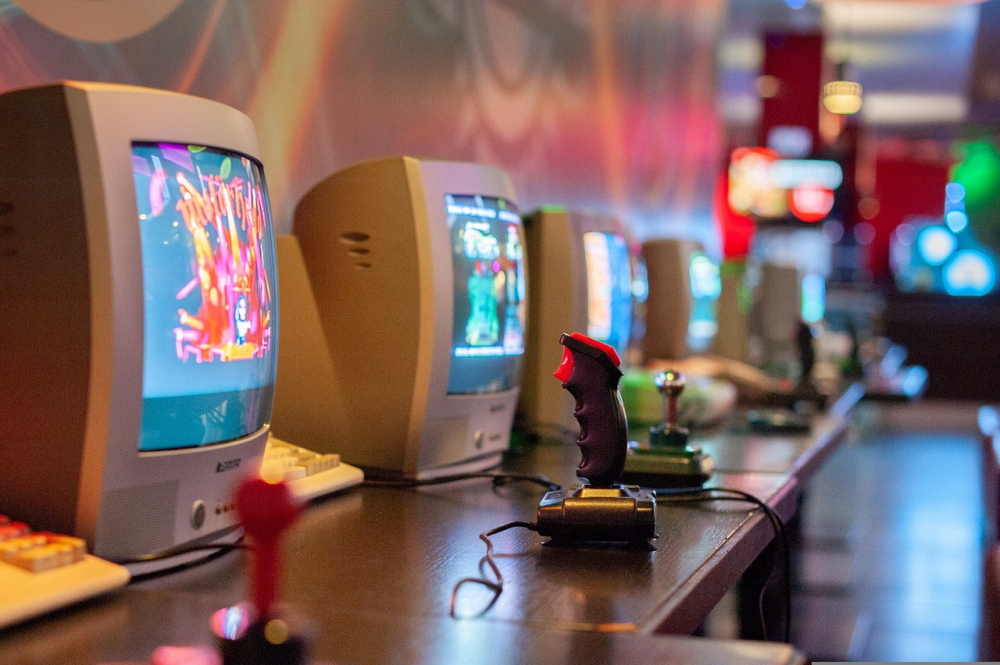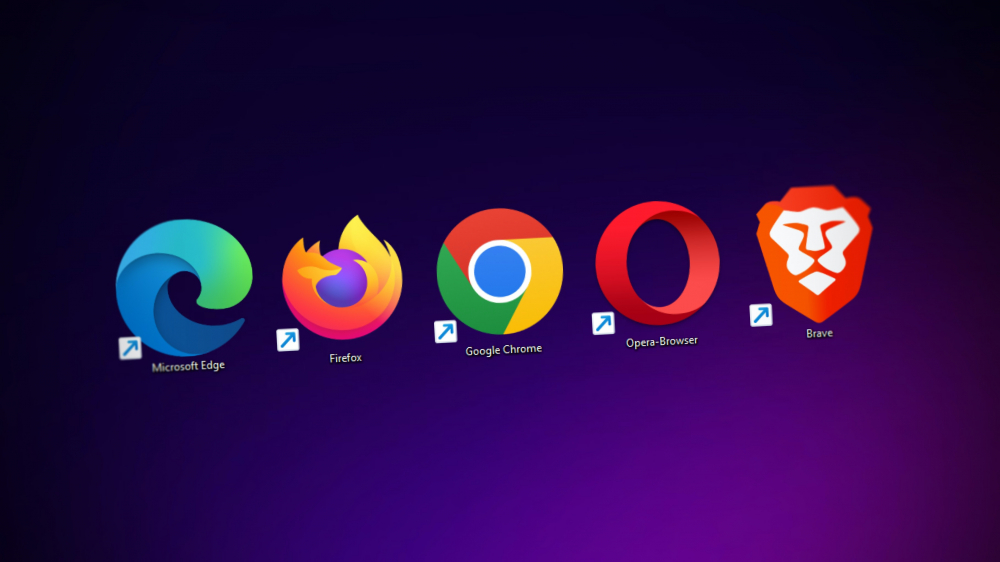The Evolution of the World Wide Web (6b)
Get Out Your Broom
As promised in the previous post, my intention for this article and more to come, is to clear the cobwebs out of the corners (understanding) of the web-- as in the world-wide-web-- and how it has evolved, so far, as it relates to Web 1.0, 2.0, Web 3.0, Web3, etc.
And here is a new term, for me and perhaps for you too, the Semantic Web.
Why do we need two ways of saying Web 3, and now, as it turns out, three (semantic)? It was in answering this question, for me, the pieces of the puzzle began to fall into place. I describe semantic web completely in the next post.
The overall purpose, which will take several more articles, is to make the connection between the new web/s and some of the new technologies that are becoming possible because of it.
Much of the early internet is fairly easy to understand. Let's start with that. Consider a cobweb. Go ahead, go find one in an unused room. They appear out of nowhere. Spontaneous combustion? We rarely find the culprit, till we vacuum the corners or move the couch. We may find her unfortunate prey, though, caught in her web.
There must be spiritual or quantum significance to that segue, for sure political.
"Oh, what a web we weave, when at first we practice to deceive."
For the answer to that riddle, you will have to read future posts.
Now, go ahead and visualize the internet, the www web and all its interconnected points.
You Get the Idea

It was during my final throes of "professional studism", graduate school (one year), 1987, I had to take an internet course. If I can remember, which I can't, we used coding to accomplish various functions. I believe it demonstrated the rudimentary form of email described below.
"It was 1971 when Ray Tomlinson invented and developed electronic mail, as we know it today, by creating ARPANET's networked email system." (Google)
The Arpanet officially closed in 1990, but it laid a foundation for and set in motion the internet we now know. I believe my class taught the use of Arpanet technology, or the next generation of it, DARPA, so designated because of government funding-- and how to do email in its earliest form. This was concurrent with data processing and the earliest computers.
"On October 29th 1969, the first message was sent from computer to computer on ARPANET. It looked like this:
CC BY-SA 3.0, Link
By SRI International - SRI International, CC BY-SA 3.0, Link
Using this technology involved a large mainframe computer and coding. I can't imagine why I took this course other than to complete a programming requirement.
Computers were around, though PC's were just beginning to appear, In my 4th year of undergraduate school, the Commodore 64 was unveiled in the computer lab.
My husband, Steve, graduated from the University of Washington in 1969. He described the process of punch cards to me. Storing data then was a complicated affair, using machines that looked like the following, and often took up entire rooms of space.
I couldn't move on to Web 1.0 until I showed you the following photo from Wikipedia.

By <a class="external text" href="
I believe this is an IBM machine.
Web 1.0My first computer was a Commodore Amiga 1000. Does anyone remember that? Read below from Wikipedia:
At a relatively affordable base price of US$1,295 (equivalent to $3,263 in 2021), the Amiga could display up to 4,096 colors, produce 8-bit stereo audio, and run several applications concurrently. These qualities were unprecedented in a consumer-oriented computer and gave the Amiga 1000 a significant technical lead on its three main competitors (the Atari ST, the Macintosh, and the IBM PC).
In 1994 BYTE wrote "The Amiga was so far ahead of its time that almost nobody – including Commodore's marketing department – could fully articulate what it was all about. Today, it's obvious the Amiga was the first multimedia computer, but in those days it was derided as a game machine because few people grasped the importance of advanced graphics, sound, and video."[21]
History of the Amiga. (2022, June 29). In Wikipedia. https://en.wikipedia.org/wiki/...

The IBM PC won out.
The web 1.0 period lasted approximately 10 years, the 1980's, roughly speaking. Of course, these time periods tend to overlap. During web 1.0 years, there was no email as we know it, and there were few software applications.
Swiftly Accelerating Learning Curves
By this time, Steve and I had begun (concurrently) our first and second food service businesses. Little did I know, after I got comfortable with a few software applications, more and better were on the way.
Accounting programs are not easy to learn. But right around the time I mastered Peachtree, Intuit and Quickbooks became the go to for tax accountants. Unsupported, Peachtree just faded into the past.
I posed to Google: What was the first word processing software program? The answer was Word Star and Word Perfect. Like the story from Quora below, I conquered Word Perfect and tried to stick with it. However, Microsoft won with Word and Office and WordPerfect went the way of Peachtree.
Was Microsoft Word the first word processor?
To the above question Jack Turner from Quora writes:
"No. There were a lot of other word processors before Microsoft and Windows even existed.
The first word processor that I personally used was WordStar running on the CP/M OS. Moving to DOS, I kept running WordStar.
After a while I moved to WordPerfect running on DOS. Microsoft Word was released at this point, but for me the DOS-based WordPerfect was what I was familiar with and what I stuck with. WordPerfect took a long time to come out with a Windows version, but eventually like any other company stuck in the past, they didn't keep themselves up to date and I moved to Microsoft Office.
I don't remember the first version I used, but I suspect it was Word 6 or Word 95."
WOW, JACK'S PATH WASMY PATH EXACTLY. From that I deduce, if not remember, there were few choices.
Microsoft Windows is a graphical interface replacing DOS. Bill Gates and Paul Allen invented it, and it went public in 1985. The choice became between PC and Apple. I had to choose the PC because Apple had very few business applications. Bye, bye, Amiga.
It's like taking a trip down memory lane.
This is being a fun article to research, though it is taking a great deal of time to write. I lived this era, but it was so long ago, I am forced to research everything to get a recall. I am experiencing (memory) bank failures.
Forgive me if I miss something, or get it wrong. Let me know. I would enjoy these and all comments.
Web 2.0Below from Google:
"1993 – Mosaic was the first browser to allow images embedded in text making it “the world's first most popular browser”. 1994 – A noticeable improvement to Mosaic came Netscape Navigator. 1995 – Internet Explorer made its debut as Microsoft's first web browser. Jan 24, 2018"
Enter the 21st Century
So, we observe/d with the advent of varying years, overlapping timelines and a catalogue chock full of new terms and acronyms (grrr), an internet growing and changing so fast, we struggle to keep up.
The world wide web (www) has become the internet.
Simply put, that statement expresses the basic difference between Web 1.0 and Web 2.0. Information traveled single-file in two directions, back and forth in the early years. There were those who produced websites filled with information. And there were those who searched and read the information. A writer and/or a reader, like one of us, did not talk to one other, unless perchance, they used a telephone, or they were both hooked up to Arpanet.
One word or one concept characterizes Web 2.0 and that would be social and sociability. With that, of course, came commerce. Now we can talk to anyone on a number of devices, email or post to a variety of platforms, photos in moments, almost anywhere.
Ease of purchasing any item (including digital) that could possibly be for sale is now a reality.

Now we are living in, if not the end of Web 2.0 years, then in a web that is beginning to take forks. Remember parallel ports? We are now able to experience parallel webs. Think about a flat piece of paper. Now think about a box. I see it a little like that.
But what is in the box?
Forgive me, computer science people, I'm a poet not a programmer. I had to look up the meaning behind html.
1) Social networking sites like Facebook and LinkedIn.
2) WordPress and blogs.
3) Wealthy Affiliate
4) Microblog such as Twitter.
5) Media Sharing like You Tube and Flickr.
7) Web-based office tools such as Google Apps.
8) Zoom with online meetings, classes, and presentations.
9) And so much more.
Following the release of its first smartphone in 2002, BlackBerrys quickly became must-have pieces of technology, first among business people and later the general public. However, in the early 2010s they struggled to keep pace with the competitive smartphone market. Another one bites the dust.

"Mobile was internet 2.0.Crypto is internet 3.0." Gil Penchina (former CEO Wikia, Inc)
As I stated in my previous post, the purpose of this series was to describe crypto in terms of the internet.
I will discuss Web 3.0, blockchain, the crypto connection, and Web3 in the next segment, but the above quote by Gil Penchina satisfies my thesis (for me), thus far.
And don't forget, "content is king."
Twenty years ago no one could have imagined the effects the Internet would have: entire relationships flourish, friendships prosper...there's a vast new intimacy and accidental poetry, not to mention the weirdest porn. The entire human experience seems to unveil itself like the surface of a new planet.
o J. G. Ballard in "Age of unreason" in The Guardian (22 June 2004)
Join FREE & Launch Your Business!
Exclusive Bonus - Offer Ends at Midnight Today
00
Hours
:
00
Minutes
:
00
Seconds
2,000 AI Credits Worth $10 USD
Build a Logo + Website That Attracts Customers
400 Credits
Discover Hot Niches with AI Market Research
100 Credits
Create SEO Content That Ranks & Converts
800 Credits
Find Affiliate Offers Up to $500/Sale
10 Credits
Access a Community of 2.9M+ Members
Recent Comments
17
Thank you, Jessie. I am glad you liked it. I hope you come back for the next one. Web3 promises surprises, I think. News about It always surprises me.
You're so right, Jeffrey, and it took a whole lot of memory to get back there. LOL.
How are you doing with the update? I ran into a whole bunch of fun today, getting caught between the new and the old. Thank goodness I saved the post to a word document, or after 5 days of working on it, it would have been down the proverbial drain. I even ended up with a whole page of code saved in case. I never save this, but today I did. Well, it is Sunday!
Yes, I have been having "fun" with the upgrade too, Donna! It will become second nature at some point.
Have an excellent new week!
Jeff
Hi, Donna
Interesting post!
I’ll add a few things.
Regarding ARPANET, ARPA (Advanced Research Projects Agency) eventually became DARPA (Defense Advanced Research Projects Agency).
Tim Berners-Lee Invented the World Wide Web while working at CERN in the late 1980s.
As a medical student, right about that time, I used a Commodore Amiga to create the very first two dimensional cardiac MRI images while I was doing a biomedical engineering fellowship for my Masters degree.
At that time there was only one MRI machine in Rhode Island that traveled from hospital to hospital in a trailer.
We created the first three dimensional cardiac reconstructions on a Sun Workstation at Brown University.
I presented that research at the American College Of Physicians and won a 1 Million dollar 10-year research grant for Brown.
All these years later we finally have the MRI technology and software to make cardiac MRI clinically useful.
I still have that Amiga 3000 in my music room and it still runs! 😎
Frank 🎸
Oh, my heart! Frank, that is so cool. I knew I had the best and I really did not know how to do what it had to offer. I went for the graphics but never had time to learn it. Eventually, Microsoft got me because I had to stick to business.
Look what you did with that early technology. Amazing. Right now, I sort of hate Microsoft.
On memorabilia, I am not kidding, Amazon has huge good books and all sorts of useless stuff too on the Amiga.
Thank you for sharing this.
The was way before Microsoft came out with Windows 1.0, which was so buggy it was unusable.
I still have an old version of Matlab that runs in MS Dos!
The first computers to have “Windows” were the Amiga and the Mac Classic. There was an Atari machine that followed shortly thereafter.
I liked the Sun workstation, which ran on UNIX OS, a true multitasking, multiuser operating system. I programmed that machine in C.
You're so far over my head. LOL. I know some of the words, but that's about it. I think I was working in MSDos back then. I dropped out of computer programming so fast. But I did manage to master Statistics, mostly because I like to play poker. I am very happy website building is becoming easier.
Yeah, before Windows, it was all MS-Dos on PC machines. I don't really care for the new Windows operating systems. Every time they make it "easier" to use, they make it more difficult to drill down to where the actual computer is hiding! 😎
So, you're a poker player. That's great! One of my patients was a pro poker player and frequently entered the Binion's tournaments. He checked himself out of the hospital once to play there and ended up back in the hospital two days later in Los Vegas.
Frank 🎸
See more comments
Join FREE & Launch Your Business!
Exclusive Bonus - Offer Ends at Midnight Today
00
Hours
:
00
Minutes
:
00
Seconds
2,000 AI Credits Worth $10 USD
Build a Logo + Website That Attracts Customers
400 Credits
Discover Hot Niches with AI Market Research
100 Credits
Create SEO Content That Ranks & Converts
800 Credits
Find Affiliate Offers Up to $500/Sale
10 Credits
Access a Community of 2.9M+ Members




Wow. Quite the history lesson.
Hi Warren. I bet you remember most of it. Nice to hear from you. Thank you for taking your time to read it.